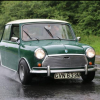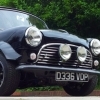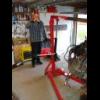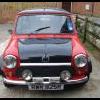I did the following:
1) wet sand with 800 wet and dry
2) wet sand with 1200 wet and dry
3) wet sand with 1500 wet and dry
4) rub with rubbing compound
5) rub with t-cut colour
6) polish with Autoglym super resin polish
all seemed fine, I have just gone out this morning (8.30am still cold)
and the paint has DIMPLES !!!!!!


when I was sanding it was coming off white, so I assume it was a clearcoat?
What has happened ???!?!??!?!?


















